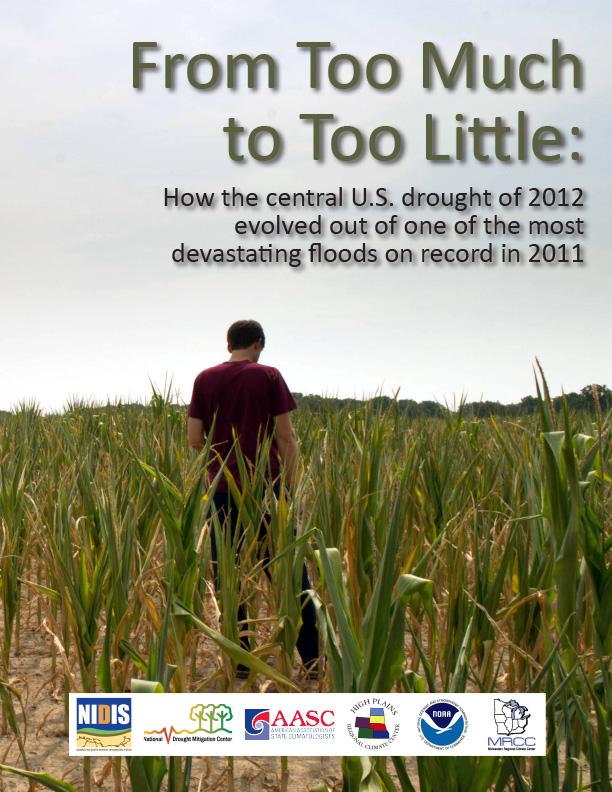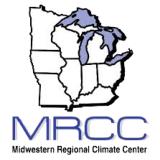From Too Much to Too Little: How the Central US Drought of 2012 Evolved Out of One of the Most Devastating Floods on Record in 2011
From Too Much to Too Little provides an assessment of the 2012 central U.S. drought.
Not only was this the first drought since 1988 that impacted almost the entire Corn Belt, it also was unique in how it developed and intensified and how quickly it took place. The 2012 drought occurred a year after epic floods throughout the Plains and Midwest. To capture the attributes associated with this drought event, an assessment of the drought on a regional and state level was conducted. This assessment is composed of contributions from state officials and university researchers, and it was made possible through funding from the National Integrated Drought Information System (NIDIS) Program Office and the National Climatic Data Center and their program for state climatologists.
The aim of this drought assessment was to help identify what was actually taking place meteorologically and climatologically, especially after the floods of 2011. The assessment documents how 14 states (Wyoming, Colorado, Kansas, Nebraska, South Dakota, North Dakota, Minnesota, Missouri, Iowa, Illinois, Michigan, Indiana, Ohio, and Kentucky) responded to the drought, and how the drought progressed locally. Each state is represented in its own report, discussing what was important to that state and how it was impacted, and a regional synopsis is also included.
The assessment examines the response of the region and the individual states to the drought with regard to local climate, agriculture, water supply, impacts, and other areas of interest, and provides a better idea of how drought impacts the various climate regimes being studied. It is hoped that we can learn from this event to help better plan and prepare for the next drought.







